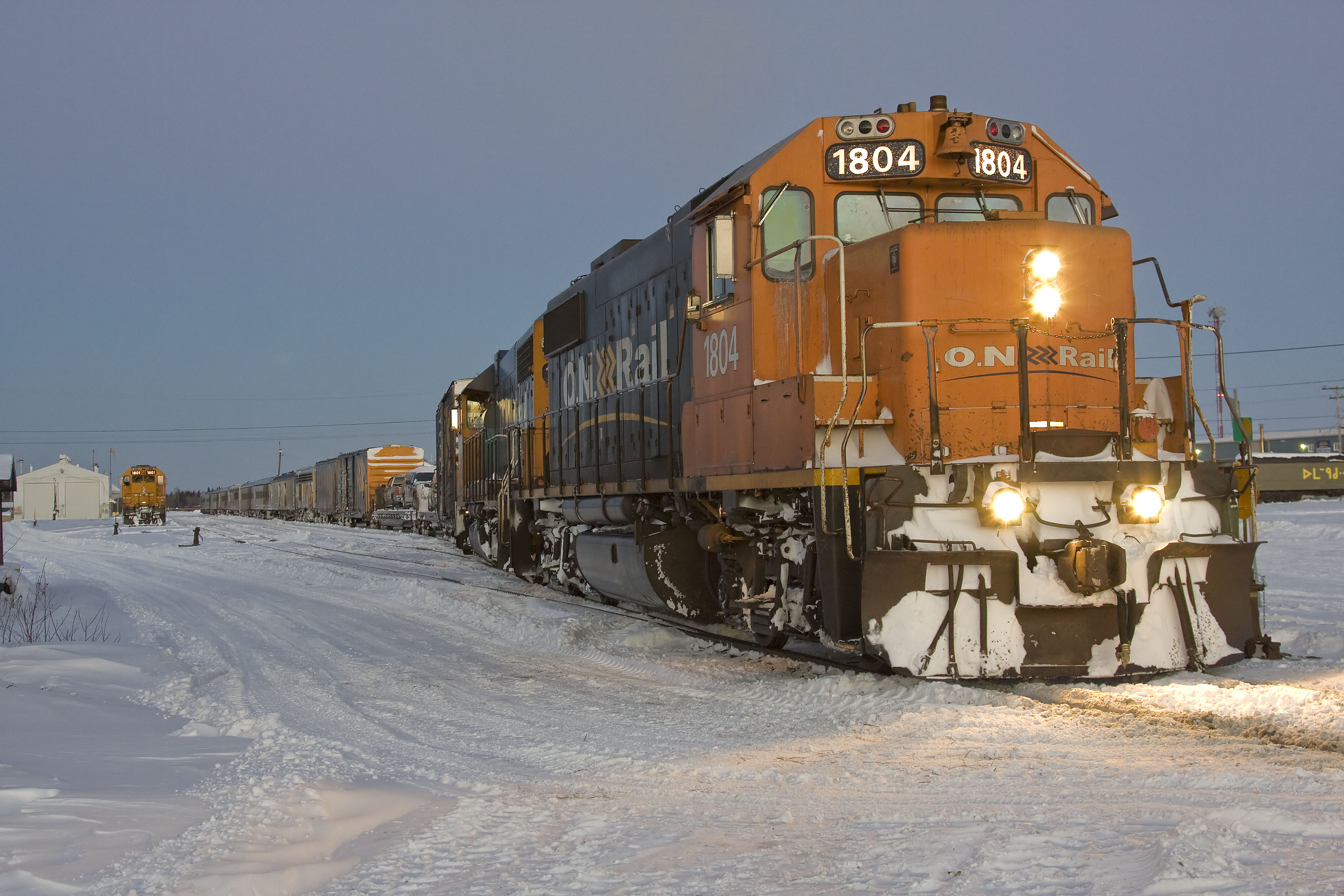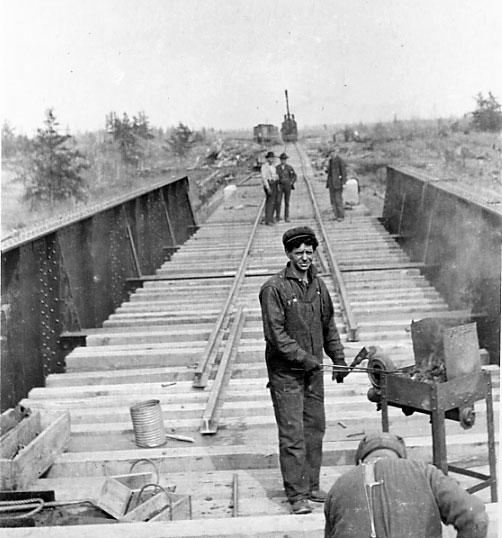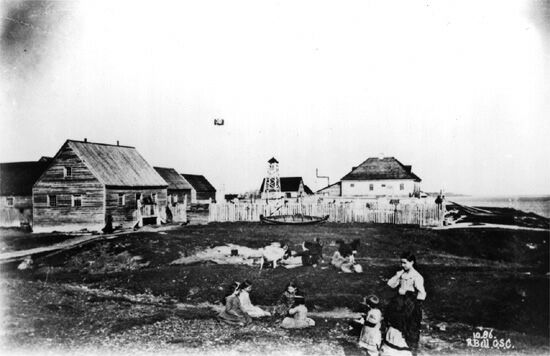|
Constance Lake First Nation
Constance Lake First Nation ( ojs, ᑾᐣᐢᑕᐣᐢ ᓴᑲᐦᐃᑲᐣ) is an Oji-Cree First Nations band government located on the shores of Constance Lake near Hearst, Cochrane District in northeastern Ontario, Canada. It is directly north of the community of Calstock along a continuation of Ontario Highway 663. Constance Lake First Nation is home to close to 1605 members of Cree and Ojibway with approximately 820 living on reserve. The reserves, Constance Lake 92 and English River 66, total in size. History The Constance Lake First Nation members are of: Mammamattawa (English River), where the Kenogami River joins with the Kabinakagami and Nagagami Rivers, was the site of Hudson’s Bay Company's and rival Revillon Frères' fur trading posts. This area became the Mammamattawa (English River) Reserve which was renamed the Constance Lake First Nation (CLFN). Constance Lake First Nation were known as the English River Band of Oji-Cree. Prior to Treaty 9, according to a ... [...More Info...] [...Related Items...] OR: [Wikipedia] [Google] [Baidu] |
Oji-Cree
The Oji-Cree are a First Nation in the Canadian provinces of Ontario and Manitoba, residing in a narrow band extending from the Missinaibi River region in Northeastern Ontario at the east to Lake Winnipeg at the west. The Oji-Cree people are descended from historical intermarriage between the Ojibwa and Cree cultures, but are generally considered a nation distinct from either of their ancestral groups. They are considered one of the component groups of Anishinaabe, and reside primarily in a transitional zone between traditional Ojibwa lands to their south and traditional Cree lands to their north. Historically, the Oji-Cree were identified by the British and Canadian governments as "Cree." The Oji-Cree have identified with the Cree (or more specifically, the Swampy Cree) and not with the Ojibwa located to the south of them. Traditionally, they were called ''Noopiming-ininiwag'' (People in the Woods) by the Ojibwe. Oji-Cree at Round Lake First Nation were known as ''Ajijaakoons'' ... [...More Info...] [...Related Items...] OR: [Wikipedia] [Google] [Baidu] |
Moose Cree
Moose Cree (Cree: ''Mōsonī'' or ''Ililiw''), also known as Moosonee, and together with Eastern Swampy Cree, also known as Central Cree, West James Bay Cree or West Main Cree. They speak the l-dialect of the Cree language. The Moose Cree were first noted in Jesuit Relations for 1671, along the shores of James Bay and along the Moose River. On thOchagach map (c. 1728) they (as "Monsonnis") were noted as far inland as the Rainy Lake region. First Nations * Abitibi River Cree (historical) ** Abitibiwinni First Nation (also Algonquin and Ojibwe) ** Wahgoshig First Nation (also Algonquin and Ojibwe) * Moose River Cree (historical) **Brunswick House First Nation (also Ojibwe) **Chapleau Cree First Nation **Constance Lake First Nation (also Ojibwe) **Kashechewan First Nation (also Swampy Cree) **Matachewan First Nation (also Ojibwe) **Missanabie Cree First Nation (also Ojibwe) **Moose Cree First Nation **Taykwa Tagamou Nation Taykwa Tagamou Nation ( cr, ᑕᐟᑾ ᑕᑲᒪᐤ ᐃᓂ� ... [...More Info...] [...Related Items...] OR: [Wikipedia] [Google] [Baidu] |
Divisional Point
In Canada, a divisional point (or division point) is a local operational headquarters for a railway. Divisional points are significant in railway maintenance of way operations. Especially historically, they could be the location of facilities and infrastructure such as a siding or junction, roundhouse and turntable, water tower, bunkhouse or hotel, coaling tower, passenger station, telegraph office, or freight shed. Stretches of railway line managed from a divisional point were known as divisions, and were further divided into segments known as subdivisions. The logistics of steam locomotives required numerous facilities for reversing, servicing, and supplying water and fuel for passing trains. This required an on-site workforce, which in some cases led to the growth of railway towns. Divisional points were historically significant in the westward colonization and development of Canada, supplanting the Hudson's Bay Company trading post in a number of cases as a focal point for e ... [...More Info...] [...Related Items...] OR: [Wikipedia] [Google] [Baidu] |
Pagwa, Ontario
Pagwa is an unincorporated place and railway point in geographic Bicknell Township in Unorganized North Cochrane District in northeastern Ontario, Canada. It is named for the Pagwachuan River. Pagwa is on a now abandoned portion of the Canadian National Railway main line originally constructed as the National Transcontinental Railway transcontinental main line, between the railway points of Wilgar to the west and Pagwa River to the east, west of the point where the line crossed the Pagwachuan River at the community of Pagwa River. A now abandoned airfield, created by the Department of National Defence in the mid-1930s in part using 47,047 person-days of unemployment relief labour, lies on the north of rail line. A Frontier College instructor was located at the construction camp. The airfield became in the late 1930s part of a string of emergency landing sites for Trans-Canada Air Lines (today Air Canada) to support their transcontinental flight operations. From 1952 to 1966 ... [...More Info...] [...Related Items...] OR: [Wikipedia] [Google] [Baidu] |
Moose Factory
Moose Factory is a community in the Cochrane District, Ontario, Canada. It is located on Moose Factory Island, near the mouth of the Moose River, which is at the southern end of James Bay. It was the first English-speaking settlement in lands now making up Ontario and the second Hudson's Bay Company post to be set up in North America after Fort Rupert. On the mainland, across the Moose River, is the nearby community of Moosonee, which is accessible by water taxi in the summer, ice road in the winter, and chartered helicopter in the off-season (break-up or freeze-up). A private company also offers freighter-canoe ferry service across the Moose River. As of 2020, the MV Niska 1 ferry was operating between Moosonee and Moose Factory, carrying passengers and vehicles. The settlement is mainly inhabited by the Cree, but the hospital that provides healthcare services to the people of the island and surrounding area (collectively known as the Weeneebayko Area Health Authority) employs ... [...More Info...] [...Related Items...] OR: [Wikipedia] [Google] [Baidu] |
National Transcontinental Railway
The National Transcontinental Railway (NTR) was a historic railway between Winnipeg and Moncton in Canada. Much of the line is now operated by the Canadian National Railway. The Grand Trunk partnership The completion of construction of Canada's first transcontinental railway, the Canadian Pacific Railway (CPR) on November 7, 1885, preceded a tremendous economic expansion and immigration boom in western Canada during the late 19th and early 20th centuries, but the monopolistic policies of the CPR, coupled with its southerly routing (new scientific discoveries were pushing the northern boundary of cereal crops), led to increasing western discontent with the railway and federal transportation policies. The federal government had encouraged the Grand Trunk Railway (GTR) system in the 1870s to consider building the transcontinental rail line. During the same time, a government survey party under the direction of Sandford Fleming set out across Canada to survey routes for the proposed ... [...More Info...] [...Related Items...] OR: [Wikipedia] [Google] [Baidu] |
James Bay
James Bay (french: Baie James; cr, ᐐᓂᐯᒄ, Wînipekw, dirty water) is a large body of water located on the southern end of Hudson Bay in Canada. Both bodies of water extend from the Arctic Ocean, of which James Bay is the southernmost part. Despite bordering the Canadian provinces of Quebec and Ontario, the bay and the islands within it, the largest of which is Akimiski Island, are politically part of Nunavut. Numerous waterways of the James Bay watershed have been modified with dams or diversion for several major hydroelectric projects. These waterways are also destinations for river-based recreation. Several communities are located near or alongside James Bay, including a number of Aboriginal Canadian communities, such as the Kashechewan First Nation and nine communities affiliated with the Cree of northern Quebec. As with the rest of Hudson Bay, the waters of James Bay routinely freeze over in winter. It is the last part of Hudson Bay to freeze over in winter, and the ... [...More Info...] [...Related Items...] OR: [Wikipedia] [Google] [Baidu] |
Fort Albany First Nation
Fort Albany First Nation ( cr, ᐲᐦᑖᐯᒄ ᐃᓕᓕᐗᒃ pîhtâpek ililiwak, "lagoon Cree") is a Cree First Nation in Cochrane District in Northeastern Ontario, Canada, within the territory covered by Treaty 9. Situated on the southern shore of the Albany River, Fort Albany First Nation is accessible only by air, water, or by winter road. The community is policed by the Nishnawbe-Aski Police Service, an Aboriginal-based service. It shares the Fort Albany 67 Indian Reserve with the Kashechewan First Nation, which officially separated from Fort Albany First Nation in 1977. Fort Albany First Nation controls the Fort Albany Indian Settlement on the south shore of the Albany River, and the Kashechewan First Nation controls the Kashechewan Indian Settlement directly across the river. Fort Albany was established in 1679 as one of the oldest and most important of Hudson's Bay Company posts. It was also involved in Anglo-French tensions leading to the Battle of Fort Albany in 16 ... [...More Info...] [...Related Items...] OR: [Wikipedia] [Google] [Baidu] |
Revillon Frères
Revillon Frères (Revillon Brothers) was a French fur and luxury goods company, founded in Paris in 1723. Then called ''la Maison Givelet'', it was purchased by Louis-Victor Revillon in 1839 and soon, as Revillon Frères, became the largest fur company in France. Branches were opened in London in 1869 and in New York in 1878. At the end of the 19th century, Revillon had stores in Paris, London, New York City, and Montreal. Through its fur buying bureau in Leipzig, Germany (1876), and an agency in Moscow (1905), the company bought most of its furs from the markets of Moscow, Leipzig and at the annual fairs in Nizhny Novgorod (Gorki) at the Makaryev Fair and in Irbit at the Irbit Fair. From 1908-1909 Revillon Frères opened fur trading posts in Siberia, Mongolia and Turkestan. By 1912 Revillon Frères had 125 fur trading posts in America and Siberia. In the 1960s, Revillon acquired Grauer Furs, New York's preeminent fur manufacturing company. Grauer Furs was founded by Austrian ... [...More Info...] [...Related Items...] OR: [Wikipedia] [Google] [Baidu] |
Hudson’s Bay Company
The Hudson's Bay Company (HBC; french: Compagnie de la Baie d'Hudson) is a Canadian retail business group. A fur trading business for much of its existence, HBC now owns and operates retail stores in Canada. The company's namesake business division is Hudson's Bay, commonly referred to as The Bay ( in French). After incorporation by English royal charter in 1670, the company functioned as the ''de facto'' government in parts of North America for nearly 200 years until the HBC sold the land it owned (the entire Hudson Bay drainage basin, known as Rupert's Land) to Canada in 1869 as part of the Deed of Surrender, authorized by the Rupert's Land Act 1868. At its peak, the company controlled the fur trade throughout much of the English- and later British-controlled North America. By the mid-19th century, the company evolved into a mercantile business selling a wide variety of products from furs to fine homeware in a small number of sales shops (as opposed to trading posts) acros ... [...More Info...] [...Related Items...] OR: [Wikipedia] [Google] [Baidu] |




